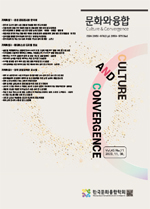본 연구의 목적은 세계적인 자연주의 정원가 피에트 아우돌프(Piet Oudolf)의 정원철학과 디자인, 구성, 식재 방식들을 분석하여 한국의 자연주의 정원에 그의 정원을 비판적, 변증법적으로 수용, 새로운정원의 창조 가능성을 모색하는 데에 있다. 문헌분석과 사례지를 방문 연구하였다. 연구 결과, 첫째, 아우돌프 정원은 초원에서 착안한 평지 정원으로 관람객의 움직임에서 얻을 수 있는 유동성 가치의 상실감을 한국의 곡선적이고 불규칙한 지형이 주는 시각 변형성 조합으로 촉지적 지각의 시각성 체득 가능성을 획득할 수 있다. 둘째, 아우돌프의 회화성 정원에 한국과 동양 정원에서 공통으로 나타나는 정원구성물에 상징성을 부여, 의미 창출을 도모한다면 미학의 확장성과 스토리텔링(Story telling)을 입혀장소성을 부여할 수 있다. 셋째, 정원 구성요소가 단조로운 아우돌프 정원에 돌, 정자, 누각 등 구조물로 시선의 다양화를 가져오며 관목, 교목들을 배치하여 정원의 단조로움을 탈피하고 관람자에게 쉴 곳을 제공할 수 있다. 넷째, 물을 정원 공간 디자인에 포함, 청량감과 물소리의 청각성 제고, 한국정원의차경기법 융합으로 확장된 시각성은 관람객들에게 정원 감상과 체험의 지평을 넓혀줄 것이다.
The purpose of this study is to dialectically embrace the naturalistic gardener Piet Oudolf's garden in Korea's naturalistic garden and explore the possibility of creating a new garden. Literature analysis and case studies were visited and studied. As a result of the study, first, the combination of the visual deformability of the flat garden Audolf Garden and Korea's curved and irregular topography can achieve the visuality of tactile perception. Second, the fusion of Audolf's pictorial garden with the Korean garden, which creates meaning by giving symbolism to garden compositions, can not only expand aesthetics but also give a sense of place through story telling. Third, in the Audolf Garden, where the garden components are monotonous, the installation of structures such as stones, pavilions, and pavilions can diversify the perspective, and the arrangement of shrubs and trees can provide richness to the garden. Fourth, the expanded visuality through the borrowed landscape method will broaden the horizons of garden appreciation and experience for visitors.
1. 서론
2. 이론적 배경
3. 연구방법
4. 한국의 자연주의 정원과 아우돌프 정원과의 변증적 조우
5. 결언과 제언
(0)
(0)
